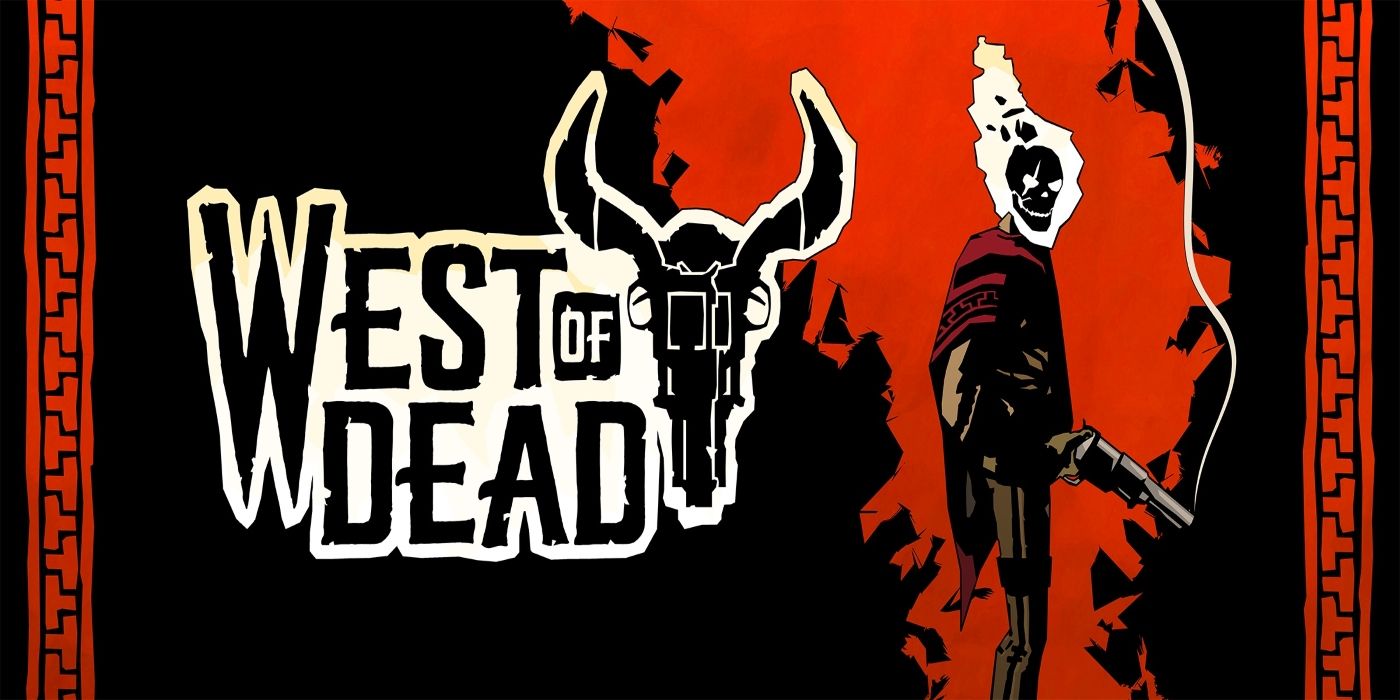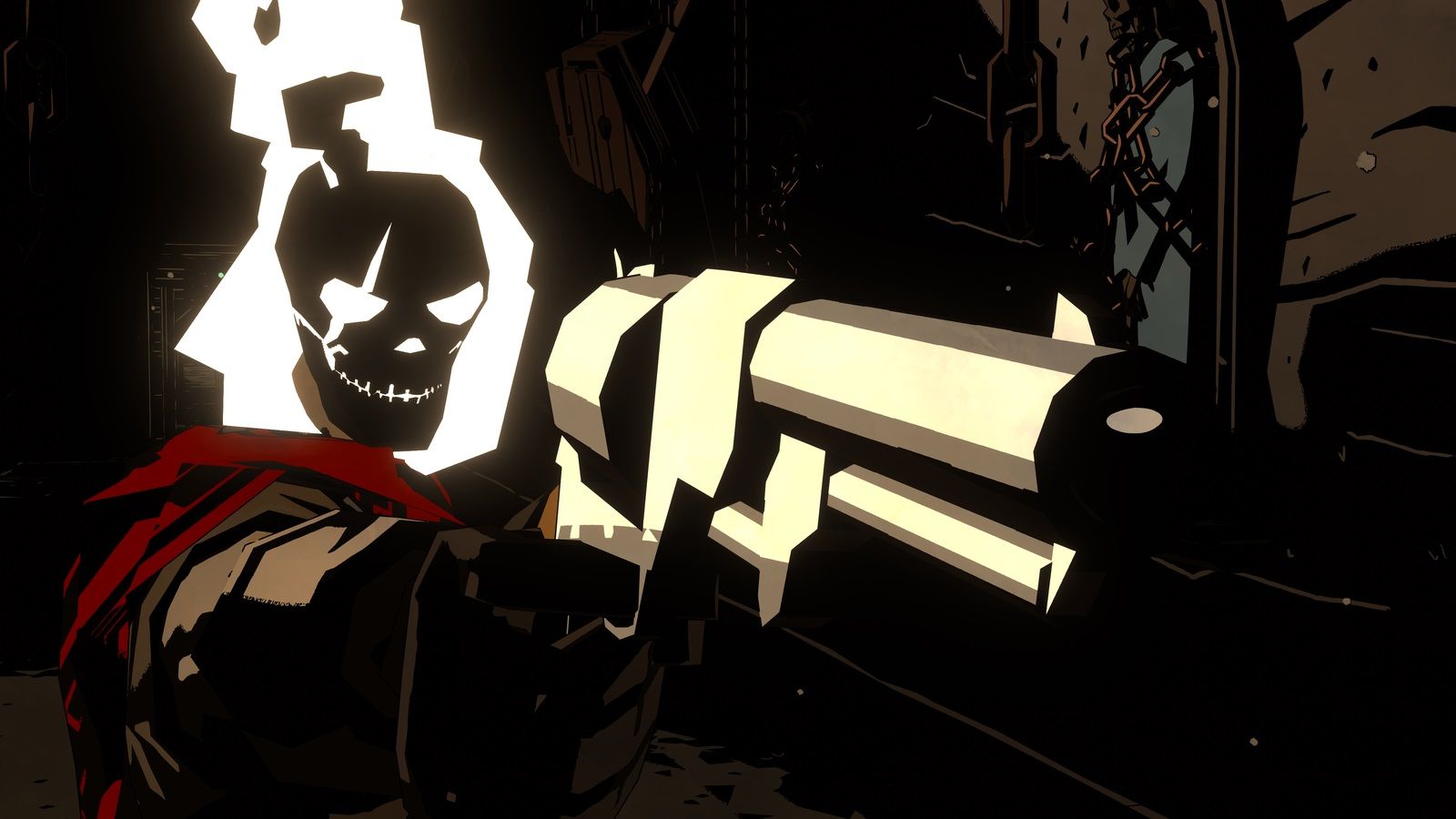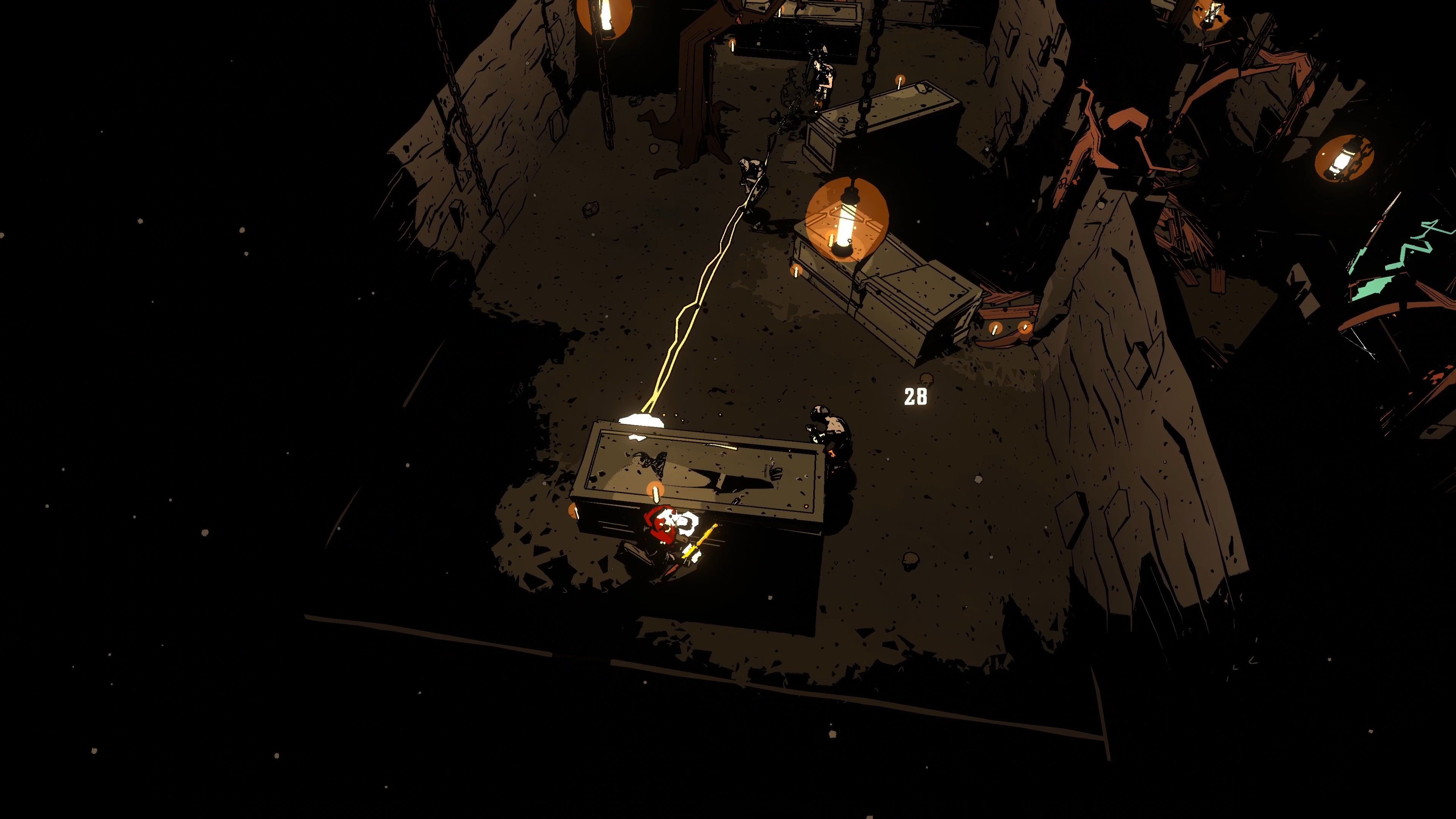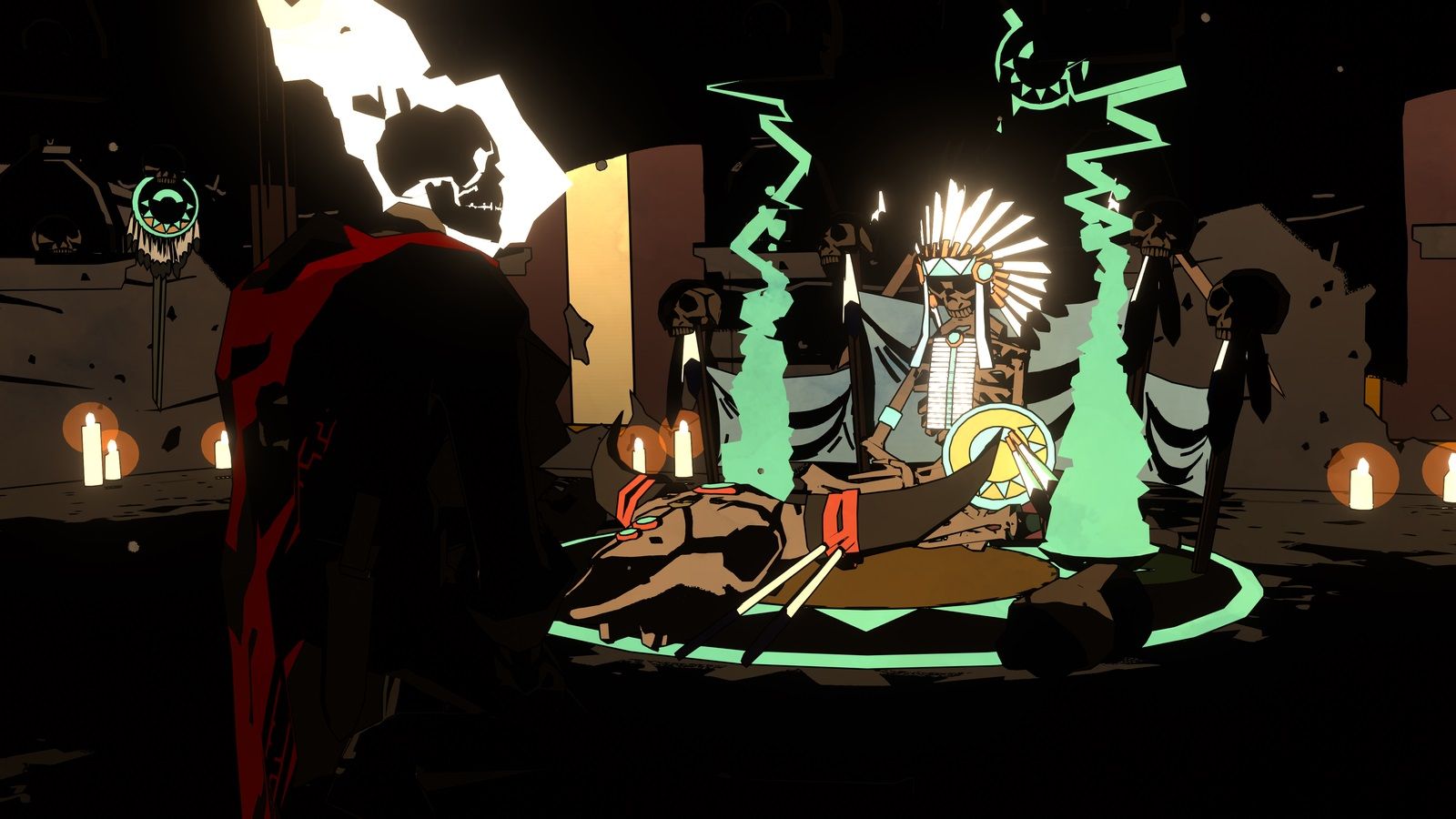Some of the most special experiences in gaming come with remarkable storytelling in the package of a beautiful and unique aesthetic. Stories that are told from new perspectives or filled with deep meaning stay with the player for days, months, and even years after the game's completion. A simple and fun gameplay experience can find its legs not only in the action and joy of the game itself, but in the memories found within the game world that was created. West of Dead is a perfect example of this. While the twin stick rogue-lite game is flawed, it is rewarding in its gameplay loop and is memorable in its storytelling and worldbuilding.
West of Dead is developed by Upstream Arcade and available now for the PC and Xbox One, with PS4 and Switch versions to follow on August 5, 2020. As an entry in the roguelite genre, West of Dead is a gratifying game to play with and a unique style.
West of Dead sees players controlling William Mason, who awakes in purgatory and finds that the afterlife isn't quite what he anticipated. He travels through purgatory, based on 1888 Wyoming, and fights monstrous creatures, but with every death, he awakes back where he started - truly stuck in limbo. He is tasked with finding out why he is in a continual loop and hopes to get to the other side. He is told that the good ones head east, towards the light, but the bad ones head west, and the bad ones currently seem to be blocking the way east for men like him.
The simple but interesting plot works perfectly within the rogue-lite genre. With games of this ilk, players have one single life to try to advance as deep as possible through the campaign. West of Dead, and most games of the genre, call each playthrough a "run." If the player dies during this run, they have to start over and attempt another run in hopes to make it further and further each time. With many rogue-lite games, the story doesn't always make sense or connect with the gameplay. West of Dead's plot, of the skull-headed dead William Mason being stuck in purgatory, fits like a pistol in a holster for the genre.
The rogue-lite genre is not to be fully confused with the roguelike genre. When a player dies in a roguelike game, they lose all progress and must start over completely with every new run. Rogue-lite games, however, allow players to retain some form of progress between runs.
West of Dead's core gameplay is very enjoyable. The player controls the movement of William Mason with one thumbstick and aims with the other. While not the best shooter of all time, the gunplay feels mostly responsive and fun. Enemies are taken down with gunfire, or melee combat up close. Other items such as bombs can also be used to attack enemies. Meanwhile, enemies attack back with weapons of their own. There is a cover system baked into the gameplay that allows players to hide behind and vault over obstacles, and it's refreshing to see from a third-person perspective.
The guns that are found throughout the game range from shotguns to pistols to rifles. Each weapon type feels unique, and playing with the various tools to wipe out a room is satisfying. Enemies attack in differing ways, with monsters rushing in for melee hits, skeleton fighters shooting with rifles, and creatures tossing in bombs. The cover system and guns allow the player to kill with style and efficiency.
Rooms are procedurally generated, making every fight feel fresh most of the time. Meanwhile, when a player dies and has to start a new run, the new and different paths and rooms keep everyone on their toes. Finding the exit to each level, or chapter as its called in West of Dead, can be a challenge. In some runs someone may find the exit within the first few minutes, in others, it could take a bit longer. But the strategy comes with deciding whether to actually leave once the exit is found. Players have a map to progress through the labyrinth-like chapters, so leaving the exit and coming back isn't hard to do. But it could be worth it to stay in the chapter longer to collect all of the secrets inside. Every chapter has rooms with chests that are filled with weapons, upgrade rooms that can be used to power up William Mason, secret passages, surprise boss-like battles, and more.
In between each chapter, players find and interact with a few helpful beings in purgatory, including the Witch. Players gain "Sin" by fighting monsters and progressing through the game, and they can then use Sin to buy items from the Witch or upgrade their healing flask. In this case, the items that are purchased actually do stay in the game regardless of each run, so this is where the rogue-lite aspect comes in. Some purchased items, like guns, get added to the loot pool of the game. For example, a pistol that freezes enemies can be bought from the Witch, and then that pistol will be found in chests and throughout the game to use on future runs.
One aspect that could frustrate gamers when it comes to West of Dead is that the runs seem stacked against the player initially. While it's theoretically possible to beat the game on the very first run without dying, it becomes easier and easier over time thanks to the items purchased from the Witch. Run 75 could have a large flask for healing, multiple powerful guns added to the loot pool, a sheriff badge that deflects oncoming shots, and more. Meanwhile, the very first run would be stuck with simple weapons and perhaps the lowest flask for healing.
Another thing that can be disorienting is the layout of the rooms. Each room feels very tight and almost claustrophobic. There is often tons of space that is not used outside of the room, since they are so small, and fighting off a dozen oncoming monsters in such a small space can seem overwhelming.
West of Dead can also become repetitive quickly. The first chapter or two is played so many times that it can get dull quickly. Yes, the rooms and the layout are procedurally generated, but the enemy types and the theme of the chapter remain the same. So because every death starts a new run that begins at square one, the earlier levels can get boring. However, this is true for most of the roguelike or rogue-lite genre and there are more exciting environments to discover as players progress.
Perhaps the most special part about West of Dead is the world-building. The art design, music, and writing are unique and remarkable. The cel-shaded graphics are dark but pretty. The music feels perfectly in line with the theme of the game, but because it stops, changes, and starts with each new enemy encounter, it can be a little abrupt. Ron Perlman (Sons of Anarchy and Hellboy) voices the undead William Mason, and he does an excellent job. His deep, brooding tone feels perfect for a cowboy stuck in purgatory. Similar to the narrator of Bastion discussing each moment, William Mason speaks of his time in the afterlife and of each event, often in witty and thoughtful ways, and always with western cowboy slang. The writing is wonderful and adds incredible value to the storytelling.
West of Dead elevates its experience thanks to to the storytelling and art design. Some aspects of the game can be frustrating, but the total package is generally rewarding in its gameplay and beautiful in its design. And as William Mason himself says, "they say a hero dies only once, but I say a hero keeps coming back," and coming back for each playthrough in hopes to finally pull off that perfect run is a mighty fine time in West of Dead.
West of Dead is out now on Steam and Xbox One, and August 5 on PS4 and Switch. Game Rant was provided an Xbox One code for this review.




